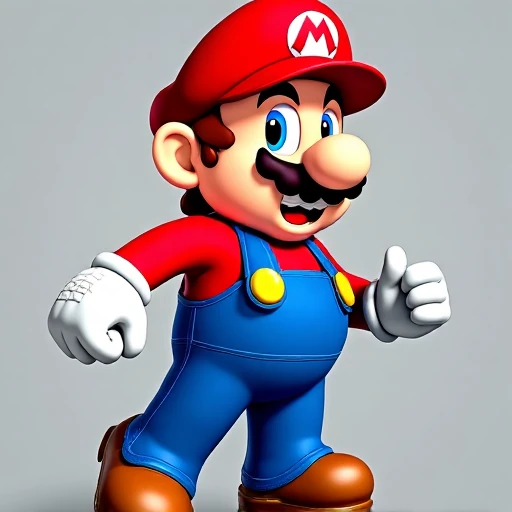Super Mario Bros. is a classic platform game developed and published by the Japanese company Nintendo, first released on September 13, 1985. Not only is this game one of Nintendo's most iconic works, but it is also one of the most influential games in the history of video games. The success of Super Mario Bros. marked the transformation of video games from a niche form of entertainment into a mainstream global cultural phenomenon.

Origins and Development
The history of Super Mario Bros. can be traced back to the early 1980s. At that time, Nintendo was focused on bringing video games into the home market through gaming consoles. One of Nintendo's predecessors, the Nintendo Entertainment System (NES), had already released early games that were largely arcade-style. However, as competition in the market grew, Nintendo sought to create a game that would sell well in homes.
The famous game designer Shigeru Miyamoto, who worked at Nintendo, was responsible for the design of this game. Miyamoto and his team created a character named "Mario," who had first appeared in the 1981 game Donkey Kong. Mario initially appeared as a simple carpenter character, but over time, he evolved into a more distinctive and recognizable figure.
Game Design and Innovation
The development of Super Mario Bros. was a groundbreaking journey in game design. The game adopted a side-scrolling platform style, which was a relatively new concept at the time. Players control Mario as he navigates through various levels, avoiding enemies, jumping over obstacles, collecting coins, and ultimately rescuing a princess kidnapped by an evil dragon. Key design features of the game include:
- Side-scrolling Design: Players could experience different environments and levels by scrolling the screen, rather than being limited to a fixed screen, making the game smoother and more enjoyable to play.
- Diverse Levels: Each level had a unique design, with elements like jumps, enemies, and traps, increasing the challenge and variety of the game.
- Innovative Power-ups: Items like the "Mushroom" and "Fire Flower" made Mario more powerful, providing players with more fun and strategy as they played.
- Sound and Music: The music and sound effects, composed by Koji Kondo, are still considered some of the most iconic in the history of video games.
Release and Global Success
In 1985, Super Mario Bros. was released as one of the flagship titles for the Nintendo Entertainment System (NES) and quickly became a global sensation. It not only became the driving force behind NES console sales but also helped popularize home video game consoles. According to statistics, Super Mario Bros. has sold over 40 million copies worldwide, making it one of the best-selling video games of all time.
The success of Super Mario Bros. was not limited to its sales figures. It completely reshaped the standards for game design, with many subsequent platform games drawing inspiration from its innovative mechanics. Mario also gradually became a symbol of video game culture, evolving into one of the most well-known game characters worldwide.
Later Developments and Influence
Following the success of Super Mario Bros., Nintendo began releasing more sequels and spin-offs in the Mario series. From Super Mario World in 1991 to Super Mario 64 in 1996, each iteration brought new technical advancements and gameplay innovations, continuing to captivate players. Mario also expanded from 2D platform games into the 3D world, becoming a "legend" for many gamers.
In addition, the Mario franchise expanded into other genres, including racing (Mario Kart), sports (Mario Tennis), and party games (Mario Party), solidifying its position in the global gaming industry. Mario is not just a video game character; he has become the face of Nintendo and continues to appear across multiple media platforms, including comics, cartoons, toys, and movies.
Most notable releases include:
1985 - Super Mario Bros.
1986 - Super Mario Bros.: The Lost Levels
1988 - Super Mario Bros. 2
1990 - Super Mario World
1996 - Super Mario 64
2002 - Super Mario Sunshine
2006 - New Super Mario Bros.
2007 - Super Mario Galaxy
2009 - New Super Mario Bros. Wii
2010 - Super Mario Galaxy 2
2011 - Super Mario 3D Land
2012 - New Super Mario Bros. 2
2013 - Super Mario 3D World
2015 - Super Mario Maker
2016 - Super Mario Run
2017 - Super Mario Odyssey
2019 - Super Mario Maker 2
